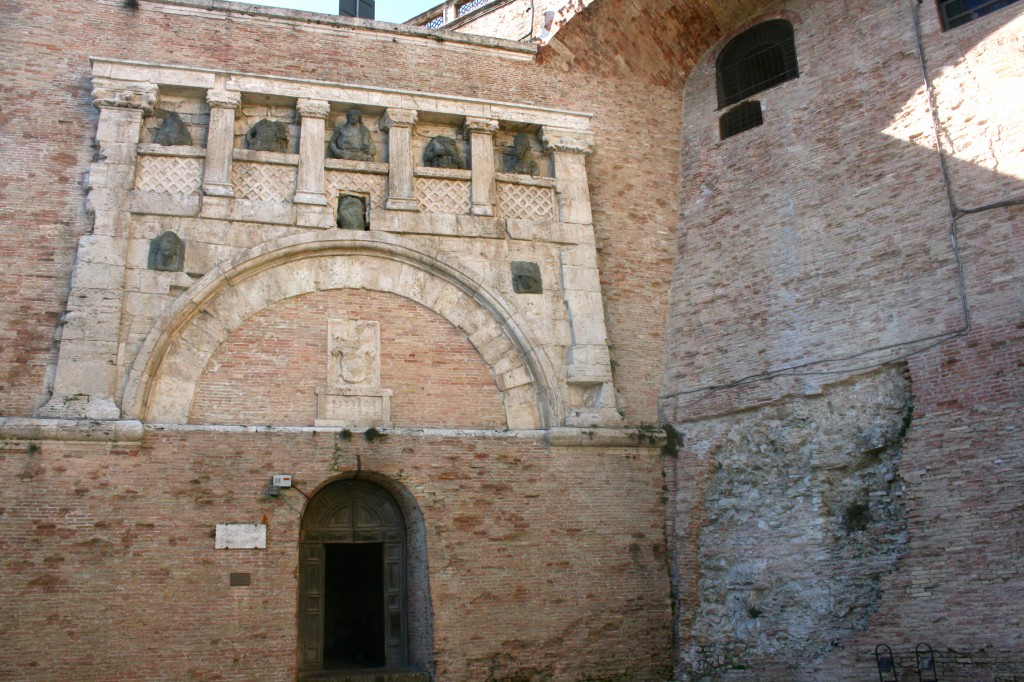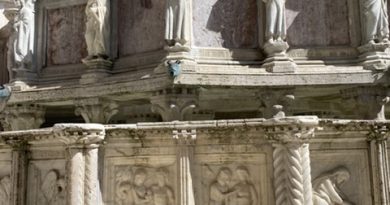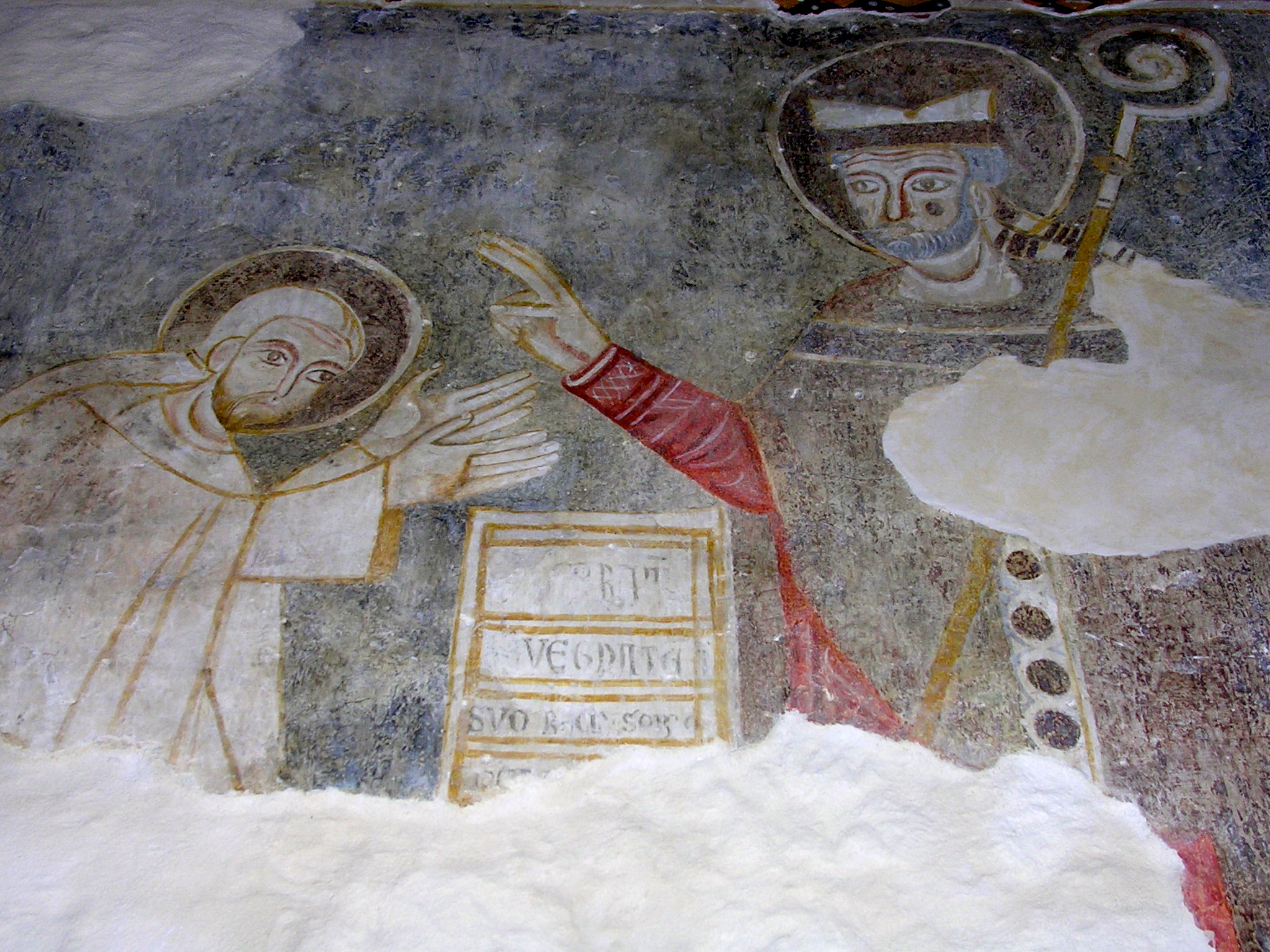Ocno and Auleste, founders of Perugia
The grand Etruscan arch that opens Perugia’s ancient city walls at its northern end is a prime, and still intact, example of military architecture. Two massive towers on either side acted as protection for the city gate and form the bases of the great double arch, from the top of which, in case of siege, arrows and stones were launched down upon the enemy.
The southern gate of the city’s Etruscan walls, on the other hand, still preserves some decorative elements which would indicate that it no longer served only for protection, but for aesthetics and celebrations. Its very different architecture would indicate that its function was more as a triumphal arch that welcomed travellers as they arrived in Perugia from Rome. This is Porta Marzia, the southern entrance of the city’s Etruscan walls. It was constructed between the end of the 4th and beginning of the 3rd century BCE. Its profound transformation over the centuries notwithstanding, it still boasts its original rounded arch of huge travertine blocks. There is a faux balcony carved into the blocks above the arch from which five Hellenistic tuff statues look out. The one in the middle is Jove – Tinia, for the Etruscans. Next to him are two figures identified as Castor and Pollux, unfortunately without their heads. On either side of the twins one can identify their steeds. A third horse may have been in the niche under the sculpture of Jove.
Could this group have represented the divine protective triad of Perugia? What if the two statues on either side of Jove were not the Dioscuri but Ocno and Auleste, the mythical founders of the Etruscan city? Let us take it step by step and analyse the elements and sources we have to work from.
The cult of the Dioscuri was certainly widespread all over Umbria during the Republican era. Think of Carsulae, where we can still see the remains of two large sacred buildings dedicated to them. Think of Assisi, where the ruins of the sacred area of a temple and tetrastyle dedicated to Castor and Pollux still lie under the Piazza del Comune.

In the case of Porta Marzia, the sculptures at Jove’s side could be identified as the two mythical brothers Auleste and Ocno – an ancient saga tells us that it was they who founded Perugia, Bologna and Mantua. This legend recounts that Perugia was founded by the Etruscan hero Auleste, the same Auleste who Servio identified as the brother (or perhaps his father) of Ocno in his comments on the 10th book of the Aeneid. Servio also tells us that Ocno had founded Felsina (the original name of Bologna) and Mantua, in order to avoid arguing with his brother Auleste.
As historian Filippo Coarelli claims, it is very likely that Ocno and Auleste had an important role not just in the Etruscan colonization of Val Padana, but also in the colonization of Umbria and Tuscany. If this were true, then the two sculptures on the faux balcony of Porta Marzia really could represent the founders of Perugia and their presence next to Jove/Tinia would also justify the close allegiance with Rome.
We know that the name Auleste became Euliste during the Middle Ages. Not only, but the myth surrounding him, the hero-founder of Perugia, was still very much alive even in the 13th century. In fact, among the bas relief panels that surround the Fontana Maggiore – which the free and powerful City of Perugia commissioned from Nicola and Giovanni Pisano – there is one depicting Euliste right on the northern corner of the upper basin. This placement was far from accidental. If we start at the mythical founder of the city on the northern side and trace an imaginary axis along the basin’s diameter, towards the southern end, we find the allegory of Perugia exactly at the opposite end of the circular basin. The allegory is represented by a matron seated in a throne with a cornucopia in hand.
If Rome, the ally of Perugia, could boast a legendary foundation that dates to the time of Romulus and Remus (it is not a coincidence that we find the twins, the wolf, Rea Silvia and the allegory of Rome among the fountains bas reliefs panels) then Perugia could be no less important where illustrious founding fathers were concerned.

With the same self-indulgent spirit, the rich and independent Guelph city of Perugia commissioned a literary work from the “magister in astrologia et in versificando” Bonifacio da Verona. This famous poet composed Eulistea, an epic poem he wrote in hexameter in 1293. Unfortunately, it has been lost over the centuries, depriving us of that which remained of an ancient saga which was still very much alive in the imagination of Medieval men. But who knows, perhaps some time in the future discoveries will be made that will return this tale to modern man.
by Antonella Bazzoli (translated by Patrick Raymer) 23 luglio 2011




